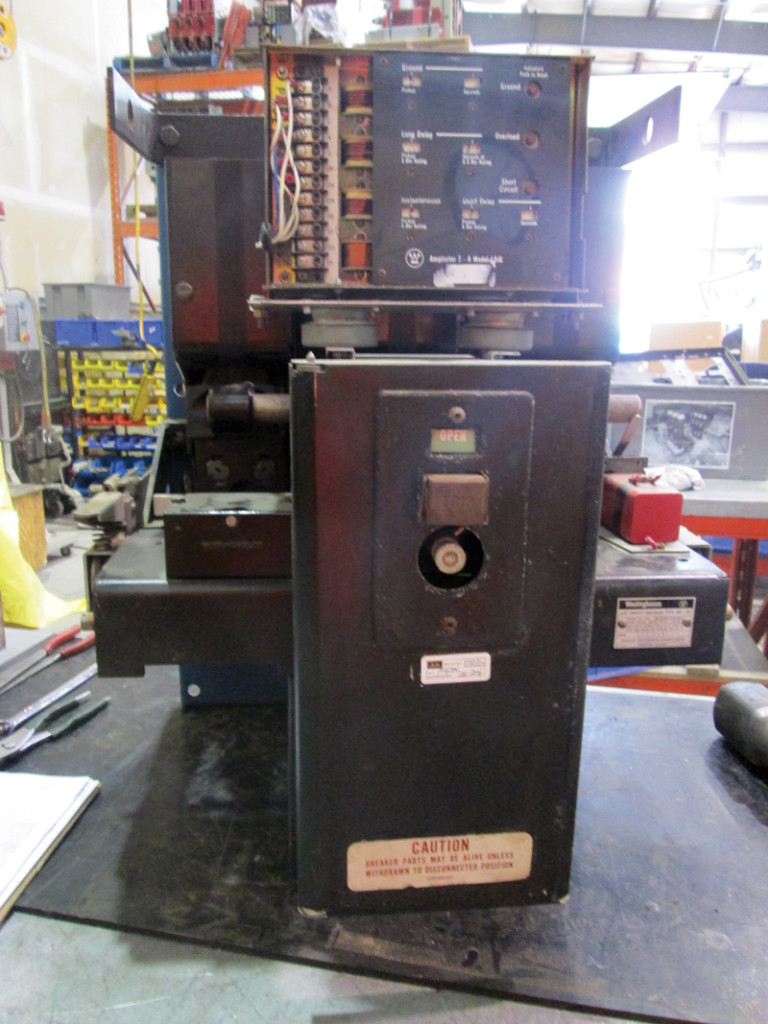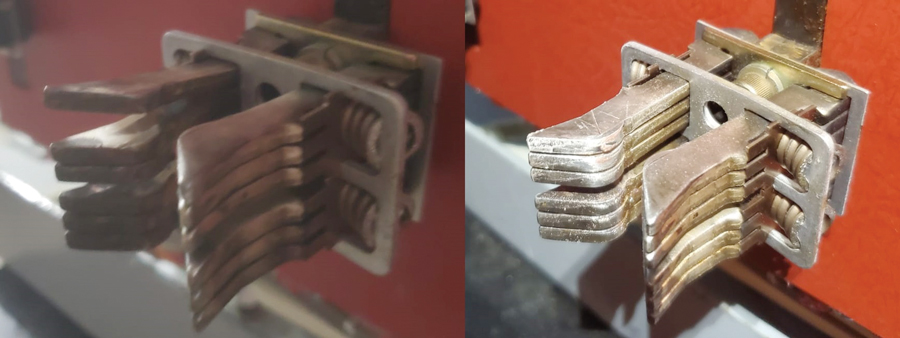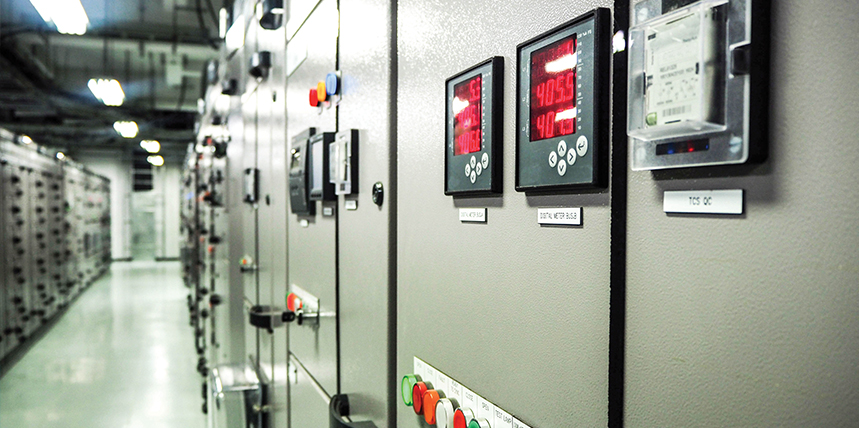Low-voltage circuit breakers are predominant in virtually every electrical power system. A 2008 NETA survey and associated IEEE paper showed that 22% of these breakers did not follow their time-current characteristics, and 10.5% did not operate at all when service-aged maintenance was undertaken. The majority of failures were mechanical in nature; this indicates regular maintenance must be a priority.
Low-voltage air circuit breakers come in a wide variety of ratings and styles from numerous manufacturers, and it can be a challenge to ensure these devices are tested to operate within their time-current bandwidth. The 2021 edition of CSA Z462, Workplace Electrical Safety offers new requirements for these devices to be assessed on a case-by-case basis as outlined in an electrical maintenance program such as the example in CSA Z463, Maintenance of Electrical Systems. It is always advisable to use competent maintenance personnel, such as those employed by NETA Accredited Companies, for testing that follows the latest ANSI/NETA specifications for electrical testing.
Low-Voltage Air Circuit Breaker – A Higher Risk Item
A recent assessment by the CSA Z463 Technical Committee deemed the rackable, low-voltage air circuit breaker (LVACB) a device that carries a higher risk than most other devices in a power system. This device can be operated on a regular basis by maintenance staff to create an electrically safe working condition. LVACBs have an on-board protection system including a series trip unit or an electronic trip unit consisting of current transformers, wiring harness, and protective relay, as well as some type of mechanical actuator. When not exercised on a regular basis, an LVACB can become inoperable without any warning. Combining the features of rackable, frequently operated, and on-board complete protection system make the likelihood and impact of failure one of the highest in the electrical power system.

DB 50 Breaker before Rebuild

DB 50 Breaker after Rebuild
Changes to 2021 CSA Z462
The chapter on Safety Related Maintenance Requirements in the 2021 edition of CSA Z462 has been revised to emphasize electrical maintenance that directly affects worker safety. For instance, the 2018 edition specifically mentions that “molded-case circuit breakers shall be maintained free of cracks in their cases and cracked or broken operating handles.” While this is important, cases and handles are included under general maintenance of equipment kept in “good working order” along with various other items such as covers in place, lugs tightened, insulation resistance tested, etc.
Condition of maintenance is to be considered numerous times during the risk assessment process. Clearly, the biggest issue in the industry is whether the equipment actually trips to clear a fault at the time specified. To ensure this, maintenance personnel must perform inspection, testing, and verification to prove the method chosen to determine the incident energy is valid. These devices often operate slower (or in some cases, not at all), especially when service aged in an industrial operating environment or due to other factors. When protective devices do not follow their time-current characteristics, workers receive a false estimate of the incident energy and choose PPE accordingly whether from the arc flash and shock label or the table method.
The operating speed of a protective device is clearly a major factor. Maintaining protective devices is critical to a worker’s safety because it affects their ability to determine the true value of incident energy in the field. Tables list typical fault clearing times of overcurrent protection devices, all dependant on equipment maintenance. For this reason, Z462 has upgraded its safety-related maintenance clause to focus on items that affect worker safety, not just general maintenance requirements.
The 2021 edition references the maintenance requirements for low-voltage circuit breakers. A removable low-voltage air circuit breaker aligns with all these requirements for maintenance:
- Protective devices “shall be maintained to function in accordance with their designed operating times.”
- Overcurrent relays, commonly called trip units on low-voltage breakers, “shall be tested to operate in accordance with their time current characteristics.”
- Ground fault protection “shall be inspected and tested to ensure they are functioning correctly and within the trip or alarm time specified.”
- Key interlocks “shall be tested for proper operation.”
- Mechanical systems that need regular exercising “shall be inspected, exercised, tested, and maintained to ensure proper electrical and mechanical operation and circuit isolation of the contacts and mechanical operation of the racking mechanisms and, where applicable, shutter mechanisms and safety interlocks.”
- Settings “shall be reviewed to ensure they meet the protection coordination study and incident energy analysis.”
All of these factors directly correlate with the safety features of a low-voltage breaker. It is vitally important to this process to ensure the entire system functions properly, including current sensors, wiring harness, trip units, shunt coils, interlocks, and conducting surfaces.
Maintenance Survey
At the end of calendar year 2020, we surveyed a group of NETA Certified Technicians about their issues and most recent failures with low-voltage power circuit breakers. The breakers were from a wide variety of manufacturers, vintages, and industry types. Results showed:
- Mechanical operation is always an issue, often due to improper lubrication, lack of exercise, wear on the main operating mechanism, or even overlubricating — particularly when applied to the finger clusters instead of the stabs, which may be energized or not accessible. It is extremely important to understand the consequences of lubricating the clusters versus the stabs or using dissimilar lubrications, as this frequently causes contact or racking problems.

Finger Clusters
- Sluggish initial operation for the first couple of operations can usually be avoided with regular maintenance on the operating mechanism and proper lubrication.
- Trip unit failures are common across the board with all types and manufacturers. These failures are discovered during time-currrent testing through primary or secondary injection.
- Damage to contact surfaces from years of maintenance scrubbing with scratch pads for no reason other than to make it shiny removes the silver plating. Be very careful when performing maintenance on silver-plated surfaces.
- Generator breakers, specifically those that are mounted on the same chassis as the generator itself, tend to have a higher failure rate. This is often a mechanical failure that causes the breaker to be inoperable.
- Coil failures can include a failed undervoltage coil or trip coil as part of the trip and control scheme.
- Vintage parts are becoming more difficult to acquire from the original manufacturer; this applies to most makes and models. It is always good to have a local NETA service company or a NETA-affiliated used-equipment vendor available.

Mechanism Failure
Ease of Maintenance
Not all low-voltage air circuit breakers are created equal. Many breakers can be quite easy to maintain, while others can be much more difficult; it depends on the installation. In the author’s opinion, the following circuit breakers are listed from the easiest to hardest to perform electrical testing on. The list is based on ease of access, shutdown required, and testing with secondary injection versus primary injection among other factors.
- Rackable power circuit breakers with solid state or electronic trip units
- Bolt-in insulated-case power circuit breakers with adjustable solid-state trip units and manufacturer’s test sets
- Bolt-in molded-case circuit breakers with electronic trip devices, adjustable settings, and secondary injection test ports
- Rackable power circuit breakers with series trip units (oil or air dash pots or other electromechanical trip units)
- Bolt-in power circuit breakers with oil or air dash pots or other electromechanical trip units
- Bolt-in molded-case circuit breakers with electromechanical trip units
Conclusion
Low-voltage circuit breakers, which typically include trip units or inherent tripping devices, should be tested to operate within their time-current bandwidth or per alternative equivalent methods recommended by the manufacturer of the trip unit or circuit breaker. Industry standards are also great tools to use for proper maintenance requirements.
Assuming electrical power distribution equipment will operate as designed without verifying operating condition can result in an unexpected increase in incident energy. In some cases, devices do not operate at all. Lengthening operating time vastly increases incident energy values, arc flash boundaries, and PPE requirements. Regular performance of proper visual and mechanical inspections and electrical tests are essential to insure low-voltage circuit breakers can provide their important safety functions.
 Kerry Heid is an Executive Consultant at Shermco Industries. After beginning his career with Westinghouse Service, Kerry founded the Magna Electric Corporation (MEC) office in Regina, Saskatchewan, in 1996 and became President of the company in 2001. The company grew to over 1,000 employees and won many awards as one of Canada’s 50 Best Managed Companies and Canada’s Top 100 Employers. MEC was acquired by Shermco Industries in December 2013, and Kerry served as CEO of Shermco Industries Canada until 2019. Kerry is a NETA Certified Level IV Test Technician and is active in Canadian standards development. He has served as Chair of the CSA Z463, Maintenance of Electrical Systems technical committee since 2010 and as a member of the CSA Z462, Workplace Electrical Safety technical committee since its inception in 2006. Kerry received the prestigious Award of Merit from the Canadian Standards Association in 2019. He served on NETA’s Board of Directors from 2003–2014, is a past-President, and received NETA’s Outstanding Achievement Award in 2010.
Kerry Heid is an Executive Consultant at Shermco Industries. After beginning his career with Westinghouse Service, Kerry founded the Magna Electric Corporation (MEC) office in Regina, Saskatchewan, in 1996 and became President of the company in 2001. The company grew to over 1,000 employees and won many awards as one of Canada’s 50 Best Managed Companies and Canada’s Top 100 Employers. MEC was acquired by Shermco Industries in December 2013, and Kerry served as CEO of Shermco Industries Canada until 2019. Kerry is a NETA Certified Level IV Test Technician and is active in Canadian standards development. He has served as Chair of the CSA Z463, Maintenance of Electrical Systems technical committee since 2010 and as a member of the CSA Z462, Workplace Electrical Safety technical committee since its inception in 2006. Kerry received the prestigious Award of Merit from the Canadian Standards Association in 2019. He served on NETA’s Board of Directors from 2003–2014, is a past-President, and received NETA’s Outstanding Achievement Award in 2010.
